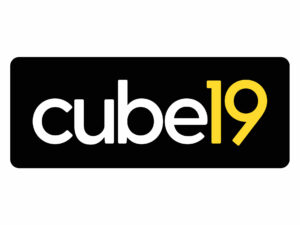Improving your brand exposure as a recruiter is vital if you want to stand out from the crowd and attract the best candidates. A strong brand can help you to combat a lack of candidates and position you as a thought leader within your industry. This blog forms part of a three-part series of blogs which contain information and tips on how to improve your own brand.Improving your brand exposure as a recruiter is vital if you want to stand out from the crowd and attract the best candidates. A strong brand can help you to combat a lack of candidates and position you as a thought leader within your industry. This blog forms part of a three-part series of blogs which contain information and tips on how to improve your own brand.
1). Use Social Media Regularly & Be Consistent
Try to post regularly on social media and make sure that your content is valuable. The best type of content gives value for free and is therefore much more likely to drive traffic to your website.
Take a look at what thought leaders in your target industry are writing/posting and take note of what gets the best engagement. Is there a different perspective you can take on that content, or could you offer an opinion on someone else’s content?
One way to do this is to map out how many pieces of content you want to make per week and use a scheduling tool to help post on your accounts (such as Buffer). Other social media tools such as ContentApp can help to suggest content for you to post across your team as well as help with your job posts.
How to do this:
– Map out the pain points of your target audience & research the latest from your industry.
– Come up with a few blog/content options which would help to solve these pain points & research them.
– Try to make it SEO friendly. Include keywords, lay it out with headings and make the title catchy.
– Use relevant hashtags on social media which are likely to reach your target audience.
– Include a nice banner or image for your content.
– Be consistent & post regularly. Whilst it might not seem to be doing much at the start, you need to keep momentum.
2). Collaborate With Others
By working with other thought leaders in your industry, you’re much more likely to increase your reach and audience. Begin by following your favourite industry leaders & news providers and offer your opinion/engage with their content. This can be as simple as replying to their tweets or offering your thoughts on LinkedIn articles/posts that you’ve read.
You can also reach out to those that you want to collaborate with and suggest some blogs you think you could write that might interest them, based on your industry knowledge & what you can offer. In exchange, ask if they can write or produce some content to go on your site. You can start small with this and work with people you know from your industry before building it up later. Eventually, the more of this that you do, the easier it will be to get content from others.
Once you have this content, make sure you share it and tag the relevant people who contributed and who you think might be interested in reading it. However, don’t just share it the once, make sure you revisit it later in the week and month.
3). Use Visual Content
With the availability of free tools online such as Canva, you can easily create infographics with data/content from your industry. Visual content is a good way to break up a lot of text on your social media feed, but don’t be afraid to re-share these later on.
How to do this:
– Research relevant statistics for your industry or offer some advice based on your experience. If you’re going to produce an infographic on data, some sources you could use are: the ONS, REC, Bullhorn & LinkedIn
– Go to a free infographic maker such as Canva, use photoshop, or a programme of your choice and make the infographic but try not to overload it with information.
– If you’re adding an image, make sure that it is copyright free. You can use sites such as unsplash.com to get images.
– Share your infographic at a good time across your social media platforms and include relevant hashtags. Include where you got your data from if relevant & tag people.
– Remember, a good infographic size depends on the platform that you are posting to. You can check out the recommended sizes here
4). Create/Use Video Content
Video content is undoubtedly the best content you can be putting time into right now and this is only set to grow. If you have a marketing team, they’ll probably have this covered, however, if you don’t, you should try to take the move to making video content yourself.
Providing you have a fairly modern smartphone, you’ll be able to record footage that is sufficient for some videos. Using your smartphone camera is certainly good enough quality for social media content and you can purchase a tripod for your phone quite cheaply to make sure your footage isn’t shaky.
Video Content Ideas:
– A ‘How to’ video / tutorial
– An animated video
– An informative video about a topic
– An expert Q&A session
– Customer testimonials
– Company promotion video
– Your thoughts on a recent piece of industry news
5). Start Promoting Posts on LinkedIn
Advertising on your social media profiles is a good way to get noticed by your target audience and there are a range of ways you can do this. As LinkedIn is your main source for candidates and where you want to focus on creating your personal brand, advertising on this platform is your best option. Promoting your job posts is one way to do this and it can increase your click rate by 40-50%.
This feature requires you to bid for the top spot in personalised job placements and allows you to adapt your spend in real-time, deciding when and how often your job post needs the extra exposure.
However, you can also promote your company or individual posts if you’ve created a piece of content that could increase hits on your website and profiles, but only do so if it’s a well written, longer piece of valuable content.
For more information on how to promote posts on LinkedIn, take a look at their guide here.
Share :



